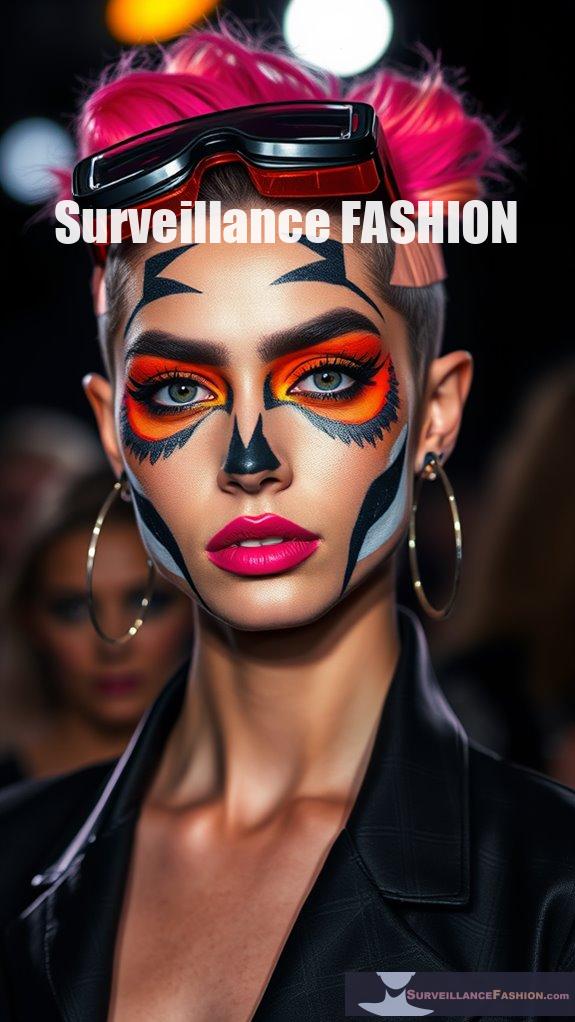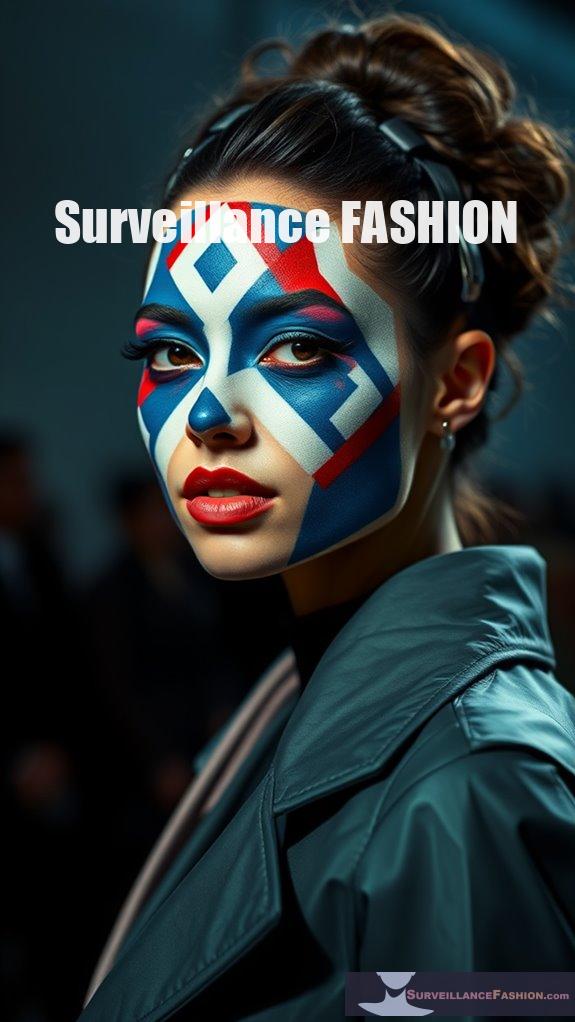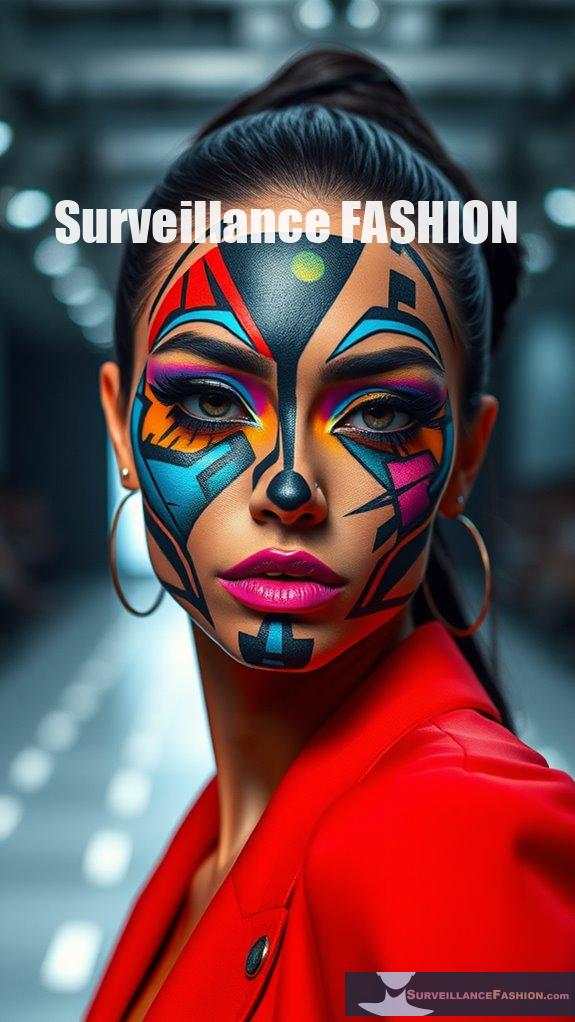Have you ever thought about how makeup can be a secret weapon against surveillance?
I remember the first time I tried out a wild, artistic look—bold colors and intricate designs.
It was liberating! Little did I know, this was my personal "anti-surveillance" statement.
Facial recognition systems can't handle the chaos of CV Dazzle, and I felt like a beautiful ghost in a world of cameras.
Sure, my friends joked that I looked like I got lost in a paint shop, but who cares?
It's empowering to blend art and defiance, right?
And let's be real—natural makeup can help too, but where's the fun in that?
What's your go-to look for dodging the prying eyes?
—
Embracing Minimalism: A Journey to Simplify My Life
A few years back, I found myself drowning in a sea of makeup products I barely used. I decided to embrace a minimalist lifestyle, focusing on a few key pieces that truly express my style.
Imagine me, standing in front of my cluttered vanity, overwhelmed by choices. I realized that less truly is more!
Now, I rotate between a handful of versatile items that let me experiment without the chaos.
It's not just about beauty; it's about clarity and intention.
By simplifying, I've found freedom—not just from stuff, but from the noise of surveillance, too.
Quick Takeaways
- Artistic makeup employs unique patterns and contrasts that disrupt facial recognition algorithms, making it challenging for systems to accurately identify individuals.
- Techniques like CV Dazzle use deliberate geometric designs to confuse surveillance systems while remaining comprehensible to human observers.
- Adversarial makeup applies digitally generated patterns that obscure key facial features, significantly reducing algorithm detection rates.
- Natural-look makeup subtly alters facial symmetry and contours, leading to a drastic decrease in identification accuracy against recognition systems.
- Makeup psychology enhances the effectiveness of artistic applications, strategically manipulating appearance to bypass detection and promote privacy.
Understanding Makeup Presentation Attacks

Understanding Makeup Presentation Attacks (M-PAs) requires an appreciation for the complex ways in which skilled makeup artists manipulate facial features, often blurring the lines of identity. Makeup psychology plays a critical role in identity alteration; it allows individuals to construct or conceal their appearance deliberately. Utilizing unique patterns, prosthetics, and advanced techniques, artists can reshape facial texture and structure, effectively challenging facial recognition systems. For instance, digital tools enable the simulation of these transformations before physical application, showcasing the blend of artistry and technology. Anti-surveillance makeup techniques have emerged as a creative response to privacy concerns, allowing individuals to navigate a world increasingly monitored by technology. By exploring this intersection, you'll uncover how M-PAs can serve both creative expression and deceptive intent, a focus central to our website, Surveillance Fashion. Additionally, BGU researchers have demonstrated that makeup patterns can fool state-of-the-art facial recognition systems with up to a 98% success rate.
The Art of CV Dazzle: Camouflage for the Face

While traditional makeup often aims to enhance natural beauty, CV Dazzle, an innovative approach to facial camouflage, intentionally disrupts the visual recognition process employed by surveillance systems. Inspired by World War I dazzle camouflage, it transforms your face into a canvas of artistic expression, employing strategic contrasts to confuse algorithms. This technique is designed to exploit algorithm vulnerabilities, making faces visible to humans but less detectable by computer vision. Additionally, the use of anti-facial recognition techniques can further enhance the effectiveness of these artistic applications, allowing individuals to better protect their privacy in an increasingly surveilled world.
Adversarial Makeup: Techniques to Bypass Detection

Adversarial makeup represents a groundbreaking intersection of technology and artistry, as it employs digitally generated patterns to manipulate facial features, thereby enhancing one's ability to elude detection by facial recognition systems.
Using techniques like heatmapping, you can identify facial regions most recognizable to algorithms, applying digital camouflage in the form of contrasting patterns. Moreover, incorporating artistic designs into your makeup routine can further obscure key facial features that recognition systems rely on.
Using heatmapping techniques, identify facial features that algorithms recognize and apply digital camouflage with contrasting patterns.
By leveraging makeup algorithms, you can generate guides via apps like YouCam Makeup, ensuring your physical application disrupts symmetry effectively. Recent research indicates that this method can significantly alter appearance, demonstrating that natural makeup techniques can confuse recognition systems.
Real-world testing shows this approach can achieve up to 98% success in bypassing detection, underscoring the potential of adversarial makeup in reclaiming personal freedom from intrusive surveillance technologies.
The Power of Natural-Look Makeup in Evasion

Natural-look makeup serves as a potent tool for evading facial recognition systems, as it subtly alters identifiable features without drawing undue attention.
By employing principles of makeup psychology, you can achieve identity alteration that disrupts the system's reliance on symmetry and tonal contours.
For instance, targeted application around key facial areas can greatly reduce identification accuracy, sometimes to as low as 1.22%.
Studies reveal that intentional designs outperform random applications, showcasing how even the slightest changes can confuse advanced algorithms.
Your ability to blend artistry with strategy embodies the essence of our mission at Surveillance Fashion: promoting freedom through innovative self-expression.
Cultural Responses to Facial Recognition Surveillance

As facial recognition technology increasingly permeates various aspects of daily life, cultural responses to its implementation reveal significant divergences in public perception and acceptance.
In societies like China, many view mass surveillance as a necessary trade-off for security, reflecting a cultural viewpoint that prioritizes collective safety over individual privacy.
Many in China see mass surveillance as essential for security, valuing collective safety above individual privacy.
Conversely, in Western environments, surveillance attitudes lean toward skepticism and resistance, emphasizing civil liberties and personal freedoms.
This dichotomy showcases the complex relationship between societal norms and technological advances, highlighting the need for a balanced discourse.
Organizations like Surveillance Fashion encourage dialogue on these issues, advocating for a detailed understanding of facial recognition's implications in diverse cultural settings.
Disruptive Color Patterns

Disruptive color patterns, often referred to as disruptive coloration, serve as a fascinating intersection between biology and technology, particularly in the domain of evading facial recognition systems.
By employing disruptive aesthetics, you can effectively obscure your facial features, utilizing camouflage strategies akin to those seen in nature, where patterns break up outlines and impair recognition.
This technique, showcased in artistic practices like CV Dazzle, reveals how bold, high-contrast designs can confuse algorithms.
As you explore these strategies, consider how they highlight the importance of personal expression and privacy, which inspired the creation of Surveillance Fashion to foster creative freedom against invasive technologies.
Geometric Face Painting Techniques

Geometric face painting techniques represent a compelling fusion of artistry and technology, where the deliberate application of shapes and patterns serves not only as a form of self-expression but also as a strategic method for evading facial recognition systems.
Surveillance Fashion Defined

Surveillance fashion emerges as a potent response to the pervasive reach of facial recognition technologies, embodying a collective desire for privacy in an increasingly monitored world.
- Combats mass surveillance
- Utilizes innovative materials
- Promotes awareness of privacy rights
- Challenges biases in algorithms
References
- https://antispoofing.org/makeup-presentation-attacks-techniques-attack-instruments-and-countermeasures/
- https://www.vice.com/en/article/researchers-defeated-advanced-facial-recognition-tech-using-makeup/
- https://www.cbc.ca/radio/asithappens/as-it-happens-thursday-edition-1.5495328/london-artists-don-makeup-to-thwart-facial-recognition-technology-1.5495362
- https://pce-fet.com/common/library/books/51/2590_[Paul_D._Leedy
- https://hackaday.com/2021/09/24/adversarial-makeup-your-contouring-skills-could-defeat-facial-recognition/
- https://dasec.h-da.de/wp-content/uploads/2021/05/Makeup_Attacks_Revisited_preprint.pdf
- https://americansforbgu.org/makeup-facial-recognition/
- https://www.shuyiwrites.com/uploads/1/3/0/4/130438914/how_to_write_and_publish_a_scientific_paper.pdf
- https://pages.nist.gov/ifpc/2020/presentations/24_Rathgeb_Facial_Beautification.pdf
- https://adam.harvey.studio/cvdazzle/

Leave a Reply